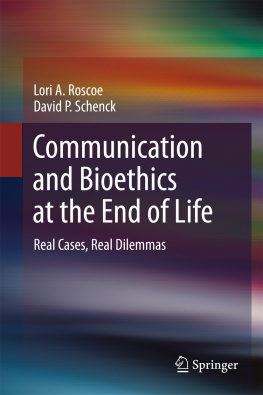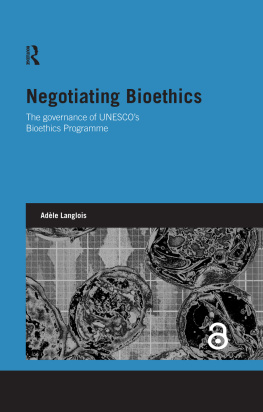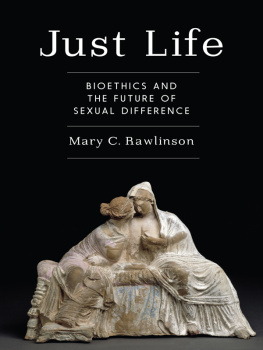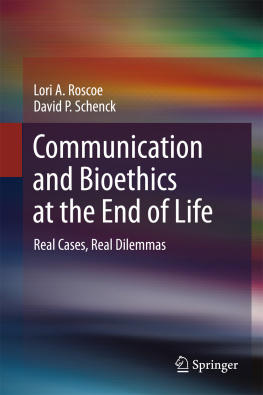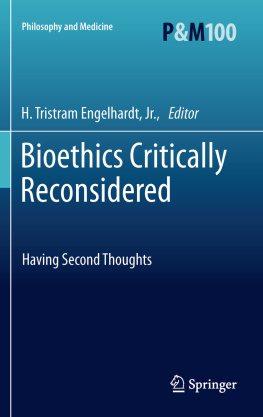Part I
Beginnings/Endings: Complex Issues with Pregnancy, Newborns, and Young Children
End-of-life cases involving pregnancy, newborns, and young children are difficult. There are at least two patients to considerat a minimum, a mother and child. Most often, there are other family members to consider. Birth is usually a joyous event in a hospital, but not always. The cases discussed here remind us that sometimes hospitals are sites of celebration, but more often sites of illness and dying. Death is nearly always hard to accept, but when a child is dying, the emotions, medical complexities, communication challenges, and ethical dilemmas can multiply.
The cases discussed in this section involve issues such as the biases healthcare professionals may hold about families with different lifestyles, values, or cultural traditions; appropriate decision-making roles for parents who are too young to legally make medical decisions for themselves; parents who have unreasonable expectations about what medical care might achieve for their child; and the ethics surrounding postmortem sperm retrieval. A short summary of each of the five cases in this section follows:
Case 1Does the Nearness of Death Diminish the Value of a Life?
A sex worker who was pregnant with her fourth child was diagnosed with a fatal tongue tumor. Balancing her treatment preferences along with the needs of her unborn child was further complicated by difficult family relationships and a history of poor access to healthcare resources.
Case 2When Cultures Collide and a Newborn Almost Dies
A graduate student studying in the U.S. from China gave birth to a baby girl with Down syndrome and an esophageal fistula. The mother refused to consent for surgery for the baby and explained that her disabled daughter would not be welcomed by extended family members when she and her husband completedtheir degrees and returned to China.
Case 3When the Family Wont Decide
A teenage mother gave birth to a baby with multiple congenital abnormalities including alobar holoprosencephaly (where the brain does not develop into left and right lobes), cleft lip/palate, severe gastroesophageal reflux, failure to thrive, and seizure disorder. The babys young parents each lived with their own parents and refused to make medical decisions or communicate with the medical team.
Case 4Aggressive Treatment for a Childs Inoperable Tumor
A 4-year-old boy was diagnosed with an anaplastic Wilms tumor, inoperable because of its massive size and proximity to vital organs. The parents insisted on continued aggressive treatment, despite its high risks, harsh side effects, and limited efficacy. The parents religious beliefsone is a Jehovahs Witness and the other relied only on nonmedical approaches to health carefurther complicated treatment decision-making.
Case 5Is There Life After Death? A Case of Postmortem Sperm Retrieval
A young widow asked her late husbands physicians to retrieve his sperm posthumously so she could conceive a child in his memory, and then changed her mind when she fell in love with another man.
Springer International Publishing AG 2017
Lori A. Roscoe and David P. Schenck Communication and Bioethics at the End of Life
1. Case 1Does the Nearness of Death Diminish the Value of a Life?
Lori A. Roscoe 1
(1)
Department of Communication, University of South Flordia, Tampa, FL, USA
(2)
Morsani College of Medicine, University of South Florida, Tampa, FL, USA
Lori A. Roscoe (Corresponding author)
Email:
I had been standing just behind Dr. C, a head and neck surgeon, watching him perform a laryngectomy when he got a call from his chief resident at City General Hospital about a seriously ill patient who had recently been admitted. When he had concluded his brief conversation on speaker phone, Dr. C suggested I would find CS a very interesting case and that I should go to City General and visit her. But upon hearing the summary of her medical and social history, I said, Well, shes never going to talk to me about those things! Yeah, she will, Dr. C countered. Shes very open about her life. Go see her. I did the next afternoon.
I knocked gently on her door and got back a barely audible response. I peeked in to find a huddled form curled into a fetal position. When I apologized at disturbing an obvious nap and said Id come back later, the patient raised her head to object that she wasnt really asleep, and asked who I was. I identified myself as Dr. X, the bioethicist with the head and neck program, a colleague of her surgeons, that I had merely come to look in on her to see how she was doing, but that I didnt wish to disturb her and could certainly come back another time. She insisted that she would like some company, but asked if I could get her nurse to give her some Lidocaine rinse to numb the pain in her tongue first so that she would be able to talk more comfortably. With that quickly accomplished she became quite chatty, and I soon discovered what Dr. C had meant. CS was a very interesting person indeed.
She was 37 years old and had presented with a large mass in the right oral tongue and enlarged nodes in the right neck. She was extremely uncomfortable, requiring high doses of pain medication. A biopsy had come back as positive for squamous cell carcinoma . She identified herself as a prostitute with a 20-year history of drug use. She had recently been released from a one-year jail term for possession of cocaine. She denied use of alcohol. She had a 20-year history of tobacco use. She was 17 weeks pregnant at the time I visited her in the hospital.
CS had three living children, none by the same father: a girl of 12 living with her (CSs) mother; a 9-year-old son living with her sister; and a 3-year-old daughter living in foster care. CS stated that her mother had recently lost both her own job and house, so that her mother and 12-year-old daughter were now living temporarily in the sisters house. The sister, however, had said that her mother and niece would have to leave, that shed had enough of this dysfunctional family. She had said, nonetheless, that she would continue to care for CSs son. From what I could glean from CSs tale, she had never taken full responsibility for any of her three living children and must have lived alone or at someone elses expense her entire adult life.
Despite her past and present difficulties, CS was excited about her pregnancy, and she was eagerly collecting new baby clothes, all neatly laid out on a table beside her bed. The babys father had paid her no visits since her admission to the hospital, yet CS seemed positive about the future. She told me about how she had most recently been living in a crack house, of her considerable anxiety over this, and of her eagerness to move elsewhere. She said she had another male friend who was a good man, not the babys father, and that he had said he would provide a home for the three of them once the baby arrived. This seemed to give her hope.
But nothing quite seemed to fit into the picture I was developing here. CS probably had no more than a high school education, if that, yet she appeared very intelligent, was highly articulate and well-spoken, and bore absolutely no traces of the coarseness or street language one might have expected of someone with her background and who had been largely left to her own devices as a latch-key child whose mother worked, whose father had abandoned the family, and who had witnessed other men beat her mother. I dont blame anyone but myself, she told me, I brought this all on myself by making bad choices. Still, she was convinced that God was going to heal her of her cancer and, in fact, asked me to pray for her as I left her room that day.

